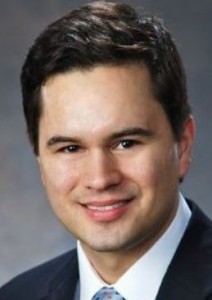Editor’s note: This is the sixth post in our school choice wish series. See the rest of the line-up here.
by Jason Crye

My school choice wish is more children, particularly Hispanic children from low-income and working-class families, have access to educational options that will help them flourish. Unfortunately, statistics show there is a lot of rocky ground to plow before my wish is granted.
Hispanics lag behind their counterparts in nearly every meaningful education statistic. For example, recent figures show the Hispanic graduation rate has improved to 76 percent, while the Hispanic dropout rate is the lowest it has been in decades at 14 percent. It is mildly encouraging that these numbers are heading in the right direction, but they are clearly not where they should be.
To achieve my wish, the education reform community, including organizations like my own, school leaders, elected officials, and other advocates, must continue to help parents engage in the public square. They must continue to stand up for the reforms that poll after poll shows are supported throughout the country.
This is exactly what I saw earlier this month at the Hispanic Council for Reform and Educational Options conference in Miami. It was so heartening to see education advocates, community activists and business leaders from around the country all focusing on the crisis we are facing, and standing together for common-sense solutions. It was also gratifying to see how partisan political differences have been put to the side when it comes to policies that work for our children.
I heard Republicans and Democrats, conservatives and liberals, all supporting the expansion of school choice programs like charter schools, vouchers, tax credit scholarships and education savings accounts. One of them, Assemblyman Marcos Crespo of New York, a Democrat, spoke at a press conference after a student named Valentin movingly told us how a school choice scholarship changed his life.
Said Crespo: “I hope that as the rest of this conference progresses that we can continue to build this network and demonstrate that there are a lot of us who believe in real success and not just our own interests, or partisanship, or labels. Our goal is to be judged by the Valentins of the world, and not by you know, who our traditional political friends are, or how much they’ve invested in our campaign. It’s not about that. It’s about Valentin.”
There is a sleeping giant in American politics. It’s the parents, who, when armed with the facts, demand excellence from the schools their children attend; who, when necessary, will march to show their strength in numbers; and who will vote to change the status quo. Many of those voters are Hispanic. Indeed, 66,000 Hispanics turn 18 years old every month, and an increasing number of them have been affected positively by various education reforms.
I look forward to a future when voters are more informed about the positive impact of school choice. I look forward to a future when parents are made aware of their educational options and have the freedom to choose the school where their child can succeed.
In the meantime, I know it is my responsibility, and the responsibility of all education reform advocates, to do everything possible to engage parents and educators. We must help children today so we can achieve that brighter future together.
Jason Crye is executive director of Hispanics for School Choice.
Coming Monday: Wevlyn Graves, Florida parent of a tax credit scholarship student.


